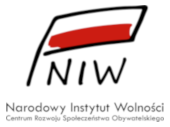SPECIAL REPORTS
Date: 15 January 2019
Ukraine–Nord Stream 2: Struggle Over Gas Transit
- The Nord Stream 2 natural gas pipeline project is primarily perceived in terms of a political venture that goes against basic EU principles and poses threat to European solidarity. It was backed by Chancellor Angela Merkel and the German government despite objections from some of EU and NATO member states and from the European Commission, not to mention possible negative consequences for Ukraine. Further, Russia’s gas giant Gazprom never took into account purely economic calculations, serving first and foremost as a tool to implement Moscow’s policy. This is to be exemplified by the firm’s reaction to its significant defeat in legal dispute with Ukraine’s Naftogaz.
- When constructing Nord Stream 2 and Turkish Stream, Russia aims to make Europe dependent on its gas supplies while weakening position of such transit countries as Ukraine, Belarus, Poland and Slovakia. Ultimately, the pipeline running alongside the Baltic Sea may transform countries located between Germany and Russia into their gas condominium.
- In addition, the project constitutes an integral element of Moscow’s policy targeted towards the Ukrainian state whose long-time strategic goal is to eliminate Ukraine from the European gas transit network and to weaken the state, also by hitting its budget. Nord Stream 2’s political, economic and security consequences will be most suffered by Ukraine as it is estimated that charges deriving from the pipeline’s launch may make up to 3 percent of its gross domestic product. If obtained, the possibility to resign from gas transit to the European Union via Ukraine removes one of many obstacles to Russia’s aggression in Kiev.
- Since November 25, 2015, Ukraine has no longer imported Russian gas; instead, all supplies that enter Ukraine’s gas network from the east are intended to be transferred westwards. Not incidentally, the date of the pipeline’s completion coincides with the expiration of the gas transit contract through Ukrainian territory. The current transit contract between Ukraine and Russia is bound to expire in December 2019 while Nord Stream 2 and Turkish Stream should be completed at the same time. Their total capacity is expected to correspond to gas volumes transported through Ukraine in 2017.
- Nonetheless, it cannot be fully exploited even if all deadlines are met, making the pipeline operational in 2019. Instead, this is likely to happen no sooner than three years later. Moreover, given the due date for completing the second string of Turkish Stream, Gazprom will not be able to resign from transporting gas supplies through Ukraine until 2024, the more so that full withdrawal is doubtful. One should also bear in mind such factors and increase in demand in Europe, Russia’s possible new sources of natural gas and a possibility to use Ukrainian pipelines in case of problems related to the exploitation of Nord Stream or Yamal-Europe pipelines.
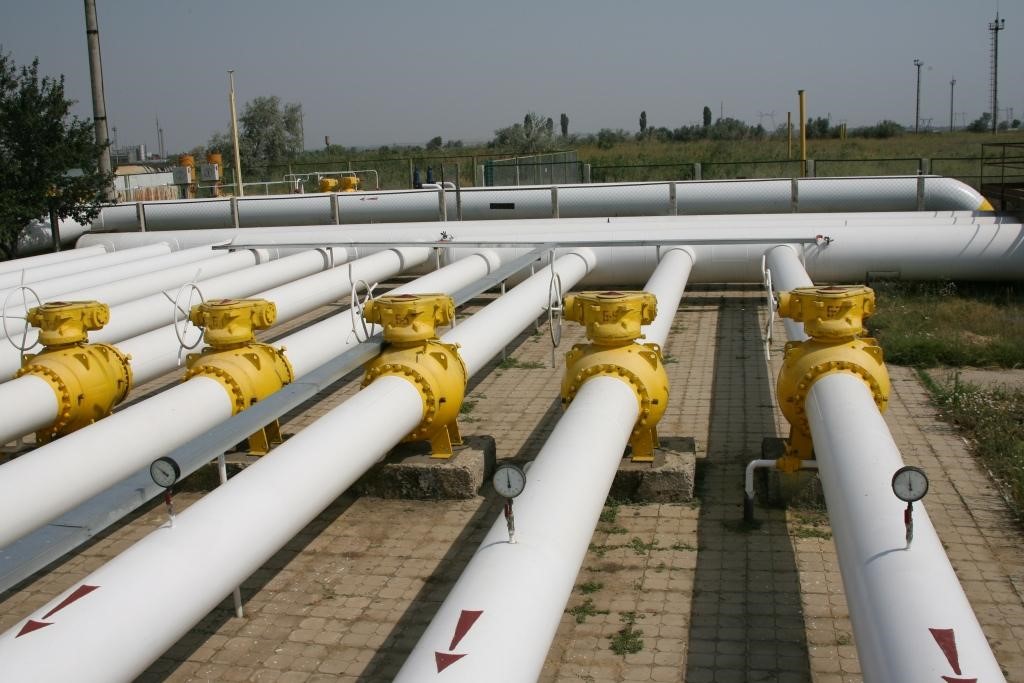 SOURCE: UTG.UA
SOURCE: UTG.UA
Nord Stream 2 as a threat for Ukraine
The construction of the Nord Stream 2 pipeline will directly translate into the doubled capacity of the line that connects Russia and Germany along the Baltic Sea bed. In 2017, Russia’s gas export to Europe rose by 8.4 percent, reaching 194.4 billion cubic meters (bcm). This means that Russian share of the European gas market rose last year to a 34.7 percent, from 33.1 percent in 2016. The Nord Stream 2 pipeline, whose construction costs are estimated at 9.5 billion euro, will double the capacity of the previously built Nord Stream One pipeline from 55 to 110 bcm per year. However, this will not translate into a sudden increase in Russian gas exports to Europe. The reason for this is very simple as Russia will not dispose of any new sources of raw material. In such a way, the gas supplies that flow through two new strings of the Baltic pipeline will not be transported via another existing export route. Given the fact that Russia-Ukraine gas deal expires in December 2019, Gazprom is highly likely to redirect supplies to the new Nord Stream 2 pipeline. Such a solution may result with a drastic reduction in the amount of Russian gas exported into Europe and Moldova through Ukraine’s transmission network. Ukraine is a key transit country for gas supplies from Russia to the European Union. Back in 2017, the transit amounted to 93 bcm – the highest level for the last seven years – meaning about half of the Russian gas exports to the EU and Turkey whilst 39 percent of Europe’s supplies ran through Ukraine.

Launching new pipelines that aim to bypass Ukraine – the second string of Nord Stream in the north and Turkish Stream in the south – may in the worst-case scenario lead to halting Russian gas supplies through the Ukrainian transmission system. To make matters worse, this situation is to pose a threat to shipment, thus complicating the security of gas imports via Ukraine. Back in 2013, with 22.6 bcm per year, Ukraine was Gazprom’s third largest client in terms of gas volumes purchase. Four years later, Ukraine’s total import figures amounted to 14.1 bcm, none of which came from Russian suppliers. Since gas purchases from Gazprom were halted in 2014, Ukraine has imported most of its supplies from EU countries. Speaking of infrastructure, such a solution seems both cheap and easy, especially given that it is the Russian gas that flows into Europe through Ukraine while in this case intermediary companies almost immediately resell part of the contracted raw material to Ukraine. In other words, Naftogaz has acquired gas in a similar way as it used to in the past, meaning gas supplies transported to Ukraine from the east, though it is no longer directly purchased from Russia’s Gazprom, but from European concerns. Similarly, either total or high restriction on Russian gas transit will deprive Naftogaz of most of its profits. For instance, in the first three quarters of 2017, Ukraine’s gas company gained more than 90 percent of its overall turnouts for transport and distribution of raw material. Naftogaz CEO Andriy Kobolyev estimated that the company’s annual revenues from transit fees amounted to between 2 and 3 billion dollars, which accounts for 2,5-3 percent of Ukraine’s GDP.
Either total or high restriction on Russian gas transit will deprive Naftogaz of most of its profits. For instance, in the first three quarters of 2017, Ukraine’s gas company gained more than 90 percent of its overall turnouts for transport and distribution of raw material. The nominal capacity of the Ukrainian gas transmission system (GTS) is 142 bcm per year. Interestingly, it amounted to 110 bcm at the end of the last decade, standing for 80 percent of all Russian gas exports to Europe. However, the Ukrainian transit was largely affected by the launch of the Nord Stream 2 pipeline. For instance, it amounted to 104.2 bcm of gas in 2011 while it decreased to the level of 84-86 bcm – thus meaning half of supplies exports to Europe – in 2012 and 2013. Speaking of 2014, the transit via Ukraine dropped to 62.2 bcm (40 percent of all exports to Europe) while 2015 was marked by an all-time low of 51 bcm, accounting for 30 percent of exports. Such figures resulted from a drop in demand for gas in Europe as well as the launch of Nord Stream in 2011, whose maximum annual capacity was estimated at 55 bcm. Shipment intensity has begun to rise yet again in recent years, which was not only due to Europe’s increased demand. Interestingly, this was not hindered by the Russian-Ukrainian conflict: in 2016, its volumes amounted to 82.2 bcm and 93.46 only a year later, marking a 13.7-percent grow, of which 90.75 bcm were transported to the EU market while 2.71 – to Moldova. Speaking of Gazprom, it was forced to make use of Ukrainian services as it needed a hard currency due to Western sanctions that contributed to a drop in hydrocarbon prices and capital outflow from Russia. Therefore, it had to sell as much gas as possible to Europe while demand was still growing. It is thus essential to compare Russian gas volumes exported to the European Union, which amounted to 138 bcm in 2010, 158 in 2015 and 178 in 2016. That would not be doable without the Ukrainian gas transmission system. Naturally, such business turned out lucrative for Kiev, providing it with some transit fees profits.
Simultaneously, Russia was still spreading anti-Ukrainian propaganda, accusing its neighbor of instability and the lack of guarantee for safe transit, with the latter resulting for the allegedly poor technical condition of Ukrainian gas pipelines. Meanwhile, Ukraine’s GTS proves to be good enough to perform its function, showing several times that it posed no threat to the security of gas supplies to the EU. The system’s flexibility is perceived as its most valuable advantage while persistent large-scale changes in the amount of the raw material did not affect its operational quality. For instance, when Nord Stream was undergoing scheduled service works in 2017, gas shipment through Ukraine was subject to a significant increase to annual proportions of 120 bcm (180 per day). Available statistics indicate that the number of technical incidents in Ukrainian GTS has never exceeded 0.06 per 1000 kilometers over the past 20 years, which is four times less than in Russia’s network. Furthermore, state operator UkrTransGaz, which is in charge of Ukraine’s gas transmission system, has been granted observer status at European Network of Transmission System Operators for Gas (ENTSOG).
Notwithstanding that, Russia seeks to take advantage of the expiry of the current gas deal in order to drastically reduce transit through Ukrainian territory. Back in April 2018, Gazprom CEO Alexei Miller said that transit of Russian gas through Ukraine would amount to between 10 and 15 bcm of gas per year after the launch of the Nord Stream 2 and Turkish Stream gas pipelines in 2019. Ukraine does not seem to be satisfied with such volumes as it initially hoped to transport annually at least 40 bcm of raw material. Both sides discussed also the annual gas shipment of 27.5 bcm, yet such a figure seemed not sufficient for Kiev. In order to make its GTS profitable, Ukraine should contract no less than 60 bcm of gas per year.
This year is thus likely to be marked by tough declarations, bluffs and attempts to catch the partner in a trap. And yet, contrary to what one might expect, Kiev is not fighting a losing battle. Nonetheless, current gas deal’s expiration will not bring about any serious problems. At the end of 2019, Russia can neither cease to transport gas through Ukraine nor reduce its volumes to 10-15 bcm annually, which would appear disastrous for Kiev. This may happen as the pipelines intended to bypass the neighbor’s territory will not be ready to supply raw material directly to EU contractors, therefore keeping to agreements with European states.
If the Nord Stream 2 pipeline reaches the German shore in 2019 (as initially scheduled, yet not at all certain), the route will be unlikely to become fully operational. Furthermore, it is necessary to launch and expand infrastructure that delivers gas to Germany and neighboring countries. It is mostly about the EUGAL gas pipeline whose route runs through Germany. Its completion is scheduled for 2022. Even if it is possible to launch the first line without any delays, Russia will be initially able to use Nord Stream 2’s maximum capacity of 34 bcm, forcing Gazprom to transport up to 40 bcm of gas before the pipeline’s second stretch becomes functional. Ukraine seems perfectly aware of this fact, hoping to put it forward in negotiations with the Russians, for example by demanding a long-term transit agreement that may provide more gas volumes. While rejecting a similar argument, Gazprom would need to face the need to lower significant amount of its gas export to Europe for two years. Still, the question is whether the Russians afford to breach contracts with European recipients.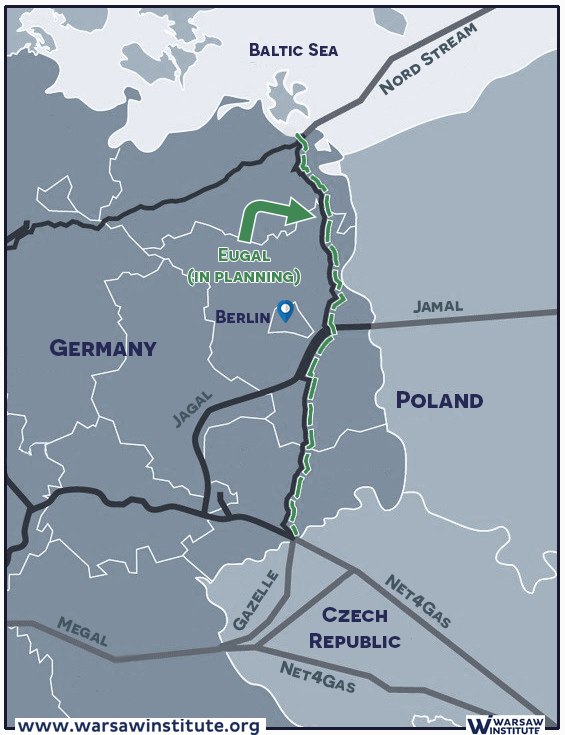
Scenarios for Ukraine
The current situation, provoked by the imminent expiration date of the Gazprom-Naftogaz deal and the threat of a drastic reduction in gas transit – or even its complete suspension, made Ukraine’s authorities and the company’s management come up with a few possible options.
Naturally, among them is the plan to block the Nord Stream 2 project, perceived as the most favorable one. However, it seems that Kiev somehow accepted the fact that the project would eventually be implemented, at least given Naftogaz’s official standpoint. On November 4, 2018, the company’s managing director Yuriy Vitrenko admitted that “it is already impossible to stop the construction of the Nord Stream 2 pipeline”, urging Russia to maintain gas shipment through Ukraine. It can thus be concluded that the project will be implemented while the German government and companies are eager to back the venture, a plan that is likely to halt gas transit via Ukraine. As informed by a member of Naftogaz’s management, the company is bound to launch an action plan aiming to compensate for all transit losses.
Thus and so, Ukraine’s state-owned firm may find it difficult to negotiate a fair deal in terms of period, gas volumes and profitable tariff. Russia’s gas giant is therefore likely to play on time while postponing any binding decisions until official results of the spring presidential elections and, more importantly, the autumn parliamentary ballot are finally announced. Much will therefore depend on a new balance of power among Ukraine’s top decision-makers. On the other hand, Ukraine might put forward yet another argument in line with its standpoint, as exemplified by an award issued by the Stockholm Arbitration Court in February 2018. The court’s ruling is much more advantageous for Kiev while Moscow clearly seeks to do its best to postpone the award payment. Not incidentally, Naftogaz CEO Andriy Kobolyev stated on July 20, 2018, that his company “can consider proposals regarding the settlement but they definitely should not interfere with talks on a new contract [with Gazprom].” To put it bluntly, the Ukrainian gas firm might be willing to make some concessions on the court’s award while expecting some beneficial transit terms in return. Speaking of the arbitration ruling, the company is currently envisaging an offensive solution. Following the failure of trilateral talks between Ukraine, Russia and the European Commission, Kiev may now seek to request the Stockholm court for further arbitration or to hope that such a step would force Moscow to make some concessions. Back in July 2018, Naftogaz filed a lawsuit with the Stockholm Arbitration Court on a contract with Gazprom on gas transit with a demand to review the transit tariff. The value of the claim was estimated at 11.58 billion dollars. Ukrainian gas company insisted to be compensated for underpayment of gas transit for the period between the arbitration’s recent ruling to the end of the agreement. Basically, Ukraine’s request was justified by “significant changes in the European gas market”.
Similarly, Kiev may still hope that there will emerge two cost minimizing variants deriving from Nord Stream 2’s creation as well as transit’s reduction or its complete halt. The former solution envisages Europe’s largest possible involvement in Ukraine’s gas sector, with particular regard to its transmission system, while the latter provides for the implementation of a closed model of gas self-sufficiency.
In 2017, Ukraine’s Energy and Coal Mining Ministry submitted an official recommendation for the government concerning preparations for reducing Russian gas transit. In addition, the discussion was held about the feasibility of Ukrainian underground gas storage for holding raw material from the EU. In June 2017, UkrTransGaz launched a customs warehouse based on gas storage facilities, enabling gas traders to store natural gas for over 1000 days without customs clearance. Its first potential clients have already appeared. Storing EU gas volumes would guarantee a profit of hundreds of millions of dollars. Naftogaz considers Italian markets operators to be attractive customers, therefore the Ukrainian firm intends to grant them control over the GTS’s section that runs towards Austria and Italy. Economically, Kiev would make a better deal if it entrusted its entire gas transmission system to the Western consortium within the framework of a long-term agreement. For the Germans and the Dutch, such a solution would yield real economic benefits, giving them authority over gas import starting from the Russian border and being much more profitable than the Gazprom-controlled Nord Stream 2 pipeline. If established, a similar consortium would automatically solve Ukraine’s problems with Gazprom, which could be done at gas reception points located at the Russian-Ukrainian border. Facing the launch of Nord Stream 2, the newly created Ukrainian gas hub would equip the state with adequate tools for the market fight against the Russian gas pipeline through the Baltic Sea, including transit fees and gas storage capacity. The idea of establishing an international consortium in charge of managing Ukrainian transit pipelines is by no means new; nevertheless, it was revived in early October 2018 by Naftogaz CEO Andriy Kobolyev. And yet the plan does not enjoy support among Ukraine’s MPs and the political elites in general who still tend to believe that domination over local gas sector translates into the state’s powerful influence.
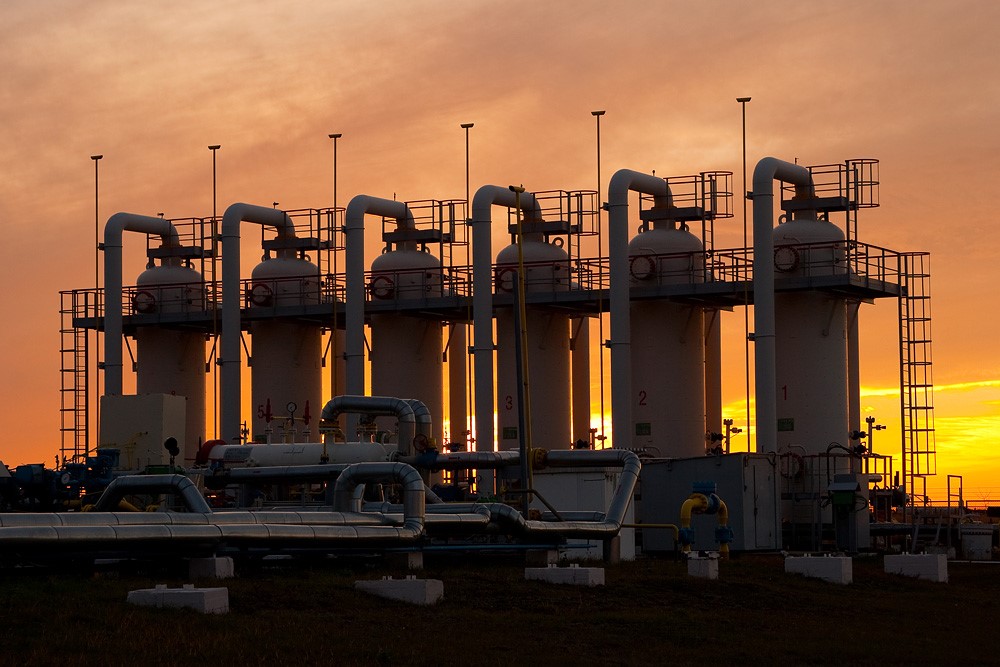 Source: UTG.UA
Source: UTG.UAFurther, Kiev might strive for introducing yet another loss minimizing mechanism while making an attempt to achieve gas self-sufficiency. It is important to remember that the Ukraine Soviet Socialist Republic was a major gas producer, accounting for extracting even a quarter of the gas produced in the Soviet Union back in the mid-1970s. In the years that followed, the production began to fall, reaching the level of 28 bcm in 1990. Ukraine has currently the third-largest confirmed gas reserves in Europe, ahead of Norway and Russia. Even though, the country does not exploit its vast potential. In 2017, Ukraine’s total gas output amounted to 20.5 bcm while the United Kingdom, which has deposits five times smaller, extracts more than 40 bcm. Similarly, Norway produces 123 bcm, with reserves two thirds greater than Ukraine’s.
This seems to illustrate the potential of Ukraine’s gas production sector, even despite the loss of Crimean deposits. Ukraine’s total confirmed gas reserves are estimated at around 870 bcm, half of which is difficult to access, including 50 bcm in the Crimea. It is to take into account Ukraine’s shale reserves, the country’s gas resources are sufficient to meet more than 20 years of current production. Notwithstanding that, it is essential to increase market shares of renewable energy sources as well as to develop an energy-saving program and to strive for further economy deindustrialization.Arbitration or bad contracts
Over the past decade, Russian-Ukrainian bilateral gas relations have been visibly dominated by two long-term deals, with the former providing for the purchase of Russian gas by Naftogaz and the latter stipulating gas transit to Europe through Ukraine. While the first one has no longer been valid for four past years, Moscow-Kiev gas struggles will be mostly about transit issues. It is not possible to get away from that matter, though. Russian-Ukrainian long-term contracts have become the subject of a dispute brought before international arbitration court whose final rulings will eventually exert influence on two countries’ bilateral relations, which seems particularly important in today’s context.
On January 19, 2009, Naftogaz and Gazprom signed two 10-year gas supply deals that came as an aftermath of talks between Yulia Tymoshenko and Vladimir Putin, both of whom were prime ministers at that time. The contracts envisaged the supply of Russian gas to Ukraine and its transit to Europe through Ukraine respectively. Russia’s price for Ukraine based upon a formula, according to which the price could amount to 485 dollars per 1,000 cubic meters. Kiev needed to make multiple concessions in order to be granted preferential discounts. Among them was the Kharkov agreement (2010), under which Ukraine extended the stay of the Black Sea Fleet in Sevastopol for 25 years, and Russia reduced the price per 1,000 cubic meters by 100 dollars. After Russia’s annexation of Crimea and the war in Donbas, Moscow announced that it would eventually abolish all pre-established discounts, thus returning to the maximum price of 485 dollars. In 2014, Ukraine’s Naftogaz filed a suit to the Stockholm arbitration court with a demand to review particular provisions of the deal. In its turn, the Ukrainian company requested the court to examine high gas prices as well as to remove the take-or-pay clause and reimburse all overpayments. Russia’s demands included among others the requirements for payment of arrears for gas supplied earlier and payment on the “take-or-pay” obligation for 2015-2016. Naftogaz and Gazprom got involved in international arbitration proceedings due to an alleged breach of contract by both parties to the agreement. According to the delivery deal, Gazprom was supposed to send 52 bcm of gas per year. However, since 2012, Naftogaz failed to fully intake the contracted volume while, since November 2015, Kiev has completely ceased to purchase Russian raw material. Ukraine’s firm, was still awaiting the court’s final ruling, had no intention to buy Russian gas, counting on EU imports and its own production.
Stockholm Arbitration’s final rulings on the delivery contract were rendered on December 22, 2017, while two months later, on February 28, 2018, it announced its decision on the Russian-Ukrainian transit deal. The court’s revoked Gazprom’s claims under the take-or-pay requirement (56 billion dollars) and gas supplies to Russian-occupied Donbas. At the same time, the arbitration obliged Naftogaz to repay the debt of 2.02 billion dollars for Russian gas supplies that took place within a few months in 2013 and 2014 respectively. Further, the arbitrators took into account Naftogaz’s request to abolish the re-export clause. In this case, Ukraine’s gas firm was a defending party; if the court had accepted most of Russia’s claims, Naftogaz would have probably gone bankrupt. As for the second legal proceeding, Naftogaz officially requested Gazprom’s compensation for the failure to supply the agreed volumes for transit. Under the 2009 deal, Russia’s gas giant was bound to deliver no less than 110 bcm of gas worth 2.34 billion dollars. In February 2018, the court ruled that Gazprom had to reimburse to Naftogaz 4.63 billion dollars in damages for failing on the transit contract while the Ukrainian company clearly hoped the compensation to be much higher, amounting to between 6.5 and 16 billion dollars. After the sum awarded in Gazprom’s favor has been deducted, the Russian gas firm was obliged to pay 2.56 billion dollars. Similarly, the judges rejected Naftogaz’s demand to increase the transit fee, claiming that the tariff issue should be regulated in bilateral talks between the two corporations.
The court’s award improved Naftogaz’s financial condition – as the company needed funds for purchasing gas volumes – and strengthened its position before further negotiations regarding a new transit agreement. Moreover, the ruling enhanced the Ukrainian company’s international image that, according to Gazprom, was referred to as an unreliable business partner. It does not come as a surprise that Russia had no intention to accept the February verdict. Instead, Gazprom began to employ various legal tricks, including appeals to numerous Swedish court instances, to block and undermine the Stockholm court’s final ruling. At the same time, Russia provoked yet another gas conflict with its neighbor. In one of its rulings, the Stockholm court stated that Gazprom should sell 4-5 bcm of gas to Ukraine at a lower price than the one included in the 2009 agreement. Gazprom did not restart gas supplies to Ukraine, leaving Ukraine struggling to stay warm as the country was hit by a record-setting cold spell. Russian company threatened to cancel gas delivery and transit deals, signed back in 2009. On March 1, 2018, Naftogaz informed that Gazprom had refused to assure further deliveries of prepaid gas volumes to be delivered in March. Instead, Gazprom returned the cash. On March 2, 2018, Gazprom CEO Alexei Miller commented on the court’s ruling, saying that “the company’s gas deals with Ukraine would no longer be commercially viable.”
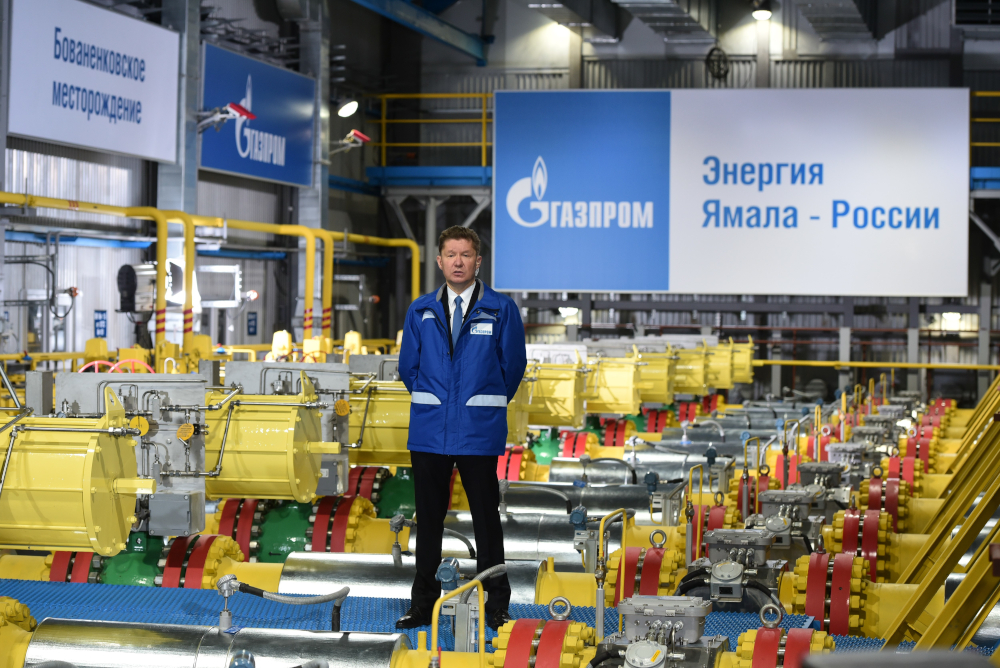 Source: GAZPROM.RU
Source: GAZPROM.RUNaftogaz decided to enforce all financial claims included in the Stockholm verdict. As a result, some of Gazprom’s European assets were frozen, such as those in the United Kingdom and the Netherlands. Swiss court banned Nord Stream AG and Nord Stream 2 AG companies from making payments to Gazprom. The jurisdiction allowed Naftogaz’s request for the enforcement of all amounts ordered. In fact, even though Russia managed to halt further legal proceedings, Gazprom suffered substantial losses while its credibility seemed to be questioned in Western markets.
German disappointment
In June 2018, Naftogaz’s managing director Yuriy Vitrenko reminded that Germany was putting pressure on Kiev to seal the deal back in 2009. “They did not want to go into details. For them, it was enough to be assured by Gazprom that the contract conformed to European standards. Later, it turned out that it had nothing to do with such regulations, constituting rather a purely Russian approach to these rules. It was a truly neocolonial policy”, Naftogaz’s Facebook page quoted him as saying. It does not come as a surprise that Ukrainian authorities are cautious about any support declarations from Germany, the more so that Berlin’s official standpoint appears crucial in the context of the Nord Stream 2’s construction.
“Germany sees Ukraine as a reliable gas transit country and an important trading partner”, Germany’ Minister for Economic Affairs and Energy Peter Altmaier declared on May 14, 2018, at the meeting with Ukraine’s Prime Minister Volodymyr Groysman. “We must develop safeguards in order to continue transit of gas through the territory of Ukraine,” Altmaier said. Four days later, German Chancellor Angela Merkel paid a visit to the Russian city of Sochi. While she stressed the need to preserve gas shipment through Ukraine, Russia’s President Vladimir Putin claimed that the implementation of the Nord Stream 2 pipeline did not prevent Russian gas from flowing through Ukrainian territory. More importantly, he added that Russia “will continue gas shipments as long as they are economically justified.” Merkel in her turn noticed that although Nord Stream 2 is referred to as an economic project, it also conveys some other aspects while Ukraine’s role as a shipping country should be maintained even upon the pipeline’s completion. Shortly afterwards, German President visited Kiev where he sought first and foremost to soothe Ukraine’s fears. “The construction of the Nord Stream 2 gas pipeline does not pose any threat to the Russian gas transit through Ukraine”, Frank-Walter Steinmeier declared after talks with his Ukrainian counterpart Petro Poroshenko, held on May 29.”Ukraine’s greatest concern, I mean the fear that it will cease to be a transistor in the future, is a groundless worry,” he added. As he stressed out, high-level discussions on gas shipment via Ukraine were currently underway. Last spring, Germany announced its eagerness to help the European Commission in searching for investors for Ukrainian gas pipelines with the aim of “maintaining Russian gas shipment”, followed by multilateral consultations held in Brussels in the summer and in September. Naturally, they did not yield any results. Germany’s offer appeared nothing more than an actual desire to play on time while making an attempt to delay possible U.S. sanctions.
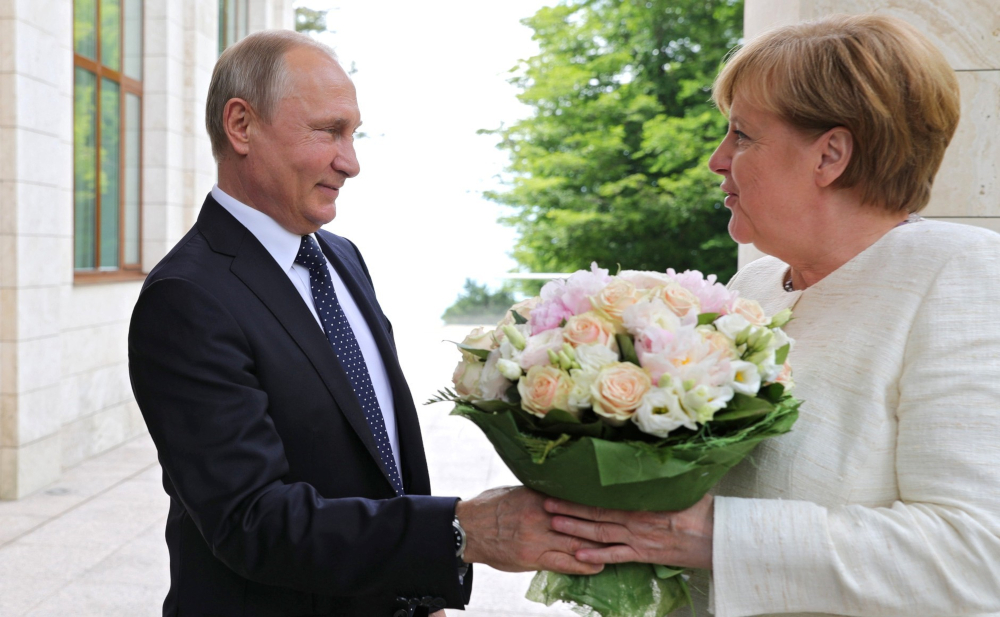 Source: KREMLIN.RU
Source: KREMLIN.RUThe very same should be said about Putin’s declaration made during the Helsinki meeting with U.S. President Donald Trump in mid-July 2018. “Mr. President [Trump] voiced his concerns about the possibility of disappearance of transit through Ukraine. I reassured him that Russia stands ready to maintain this transit,” Putin said during a press conference right after the meeting with his American counterpart. Furthermore, Russian leader declared that his country stood ready to extend this transit contract, yet it depends on how the international arbitration court is going to handle the Gazprom-Naftogaz legal dispute. Putin’s words were almost immediately commented on by Naftogaz’s Yuriy Vitrenko, according to whom Russia and Ukraine had already managed to solve supply and transit issues while Russia’s Gazprom had still no intention to comply with the awards of the Stockholm court. A day after the Helsinki summit, representatives of Ukraine, Russia and the European Commission met in Berlin to discuss conditions of Russian gas shipment through Ukraine. However, they also continued to be fruitless. Unofficially, Germany put forward several transit variants, as reported by the Ukrainian media, an example of which was the idea of dividing a separate section of the Urengoy–Pomary–Uzhhorod pipeline, coming from the Kursk corridor direction, that could be then handed over to an external consortium. This may be due to the Berlin’s need to transit via Ukraine annual amount of gas of 30 bcm before Nord Stream 2 becomes fully operational. Thus and so, Germany is not at all interested in other capabilities of Ukraine’s gas transmission system. Partial gas shipments, if maintained, would enable the Germans to admit that they had managed to keep their word while assuring Ukraine that Nord Stream 2 would pose no threat to transit operations.
In late November and early December 2018, it became clear for Kiev that Germany backed Nord Stream 2 and Russian gas transit via Ukraine, both of which are strongly linked one to another. After Russia shot and seized Ukrainian navy vessels in the Kerch Strait region, Ukraine’s ambassador to Germany said that the project implementation should be halted as part of the world’s reaction to Moscow’s further provocative military activities. Interestingly, a similar approach was adopted by some European countries. “I have taken note of the criticism [over the Nord Stream 2 pipeline, which will allow Russia to bypass Ukraine in transporting gas to Europe,] but nothing has changed in the basic view of the economic project which is what Nord Stream is,” German government spokesman Steffen Seibert stated on November 28. The following day, Germany’s Economy Minister Peter Altmaier stated that the Nord Stream 2 issue should be no longer discussed within the context of Russian military activities in occupied Crimea. “Those are actually two different things. Germany has always represented Ukraine’s legitimate interests. This is why we seek to conduct our negotiations in a consistent manner in order to ensure Russian gas transit through Ukraine from 2020 onwards if Nord Stream 2 is to be completed one day”, Altmaier said. Four days later, Germany’s Foreign Minister Heiko Maas stressed that Berlin would not scrap the Nord Stream 2 gas pipeline project, adding that it would still be built and it should become a bargaining chip in the Russian-Ukrainian negotiations regarding the latter’s security.
United States as Ukraine’s Last Hope
Director of the U.S. Department of State’s Bureau of Energy and Natural Resources Sandra Oudkirk said the United States “does not believe that such guarantees will prove to be effective”. The U.S. administration overtly stated that it does no longer believe whether Germany’s efforts to obtain Russian guarantees for uninterrupted gas deliveries to Europe via Ukrainian territory eventually turn out to be successful. The problem is that the United States has nothing to offer in this respect. Thus and so, Ukraine has no option but to involve in political lobbying in western Europe and, more importantly, enter into cooperation with Nord Stream 2’s opponents.
Such partnership seemed best illustrated by a joint declaration, signed by the parliamentary speakers of Lithuania, Latvia and Poland in Vilnius on March 11, 2018, in which they warned other EU countries against backing the Nord Stream 2 venture. It was only later than Estonia’s parliamentary speaker announced his decision to join the statement. Naturally, both Poland and the Baltic States are Kiev’s natural allies in its struggle against Moscow’s gas expansion. Needless to say that Ukraine’s authorities have been long aware of Germany’s problematic standpoint. In an interview with Handelsblatt, published in April 2018, President Petro Poroshenko urged German politicians and businessmen to revise their hitherto approach to Nord Stream 2, going as far as to say that the pipeline is a “bribe for loyalty” from Russia to Germany. And yet, during his trip to Berlin, he was again unable to persuade Chancellor to pull out of the venture. Almost at the same time, the Verkhovna Rada, Ukraine’s parliament, on April 5, 2018, adopted a resolution, calling on the international community to make every effort to ban the construction of the Nord Stream 2 gas pipeline. According to its authors, the European Commission should first and foremost discuss the issue with Kiev, which is compliant with the EU-Ukraine Association Agreement, free trade agreement and the treaty of European Energy Community. Moreover, Ukraine’s parliament urged Western countries to extend economic sanctions – imposed on Moscow after its military aggression against Ukraine – also against Gazprom and all persons related to Russia’s gas giant. Ukrainian MPs warned that the gas pipeline might eventually result with Russian monopoly in the European gas market, leading even to Europe’s destabilization.While visiting Brussels on May 25, 2018, Ukraine’s Prime Minister Volodymyr Groysman reiterated that Ukrainian pipelines were fully operational to secure gas supplies to European consumers while their joint use, along with EU and American partners, brings about additional guarantees, becoming an alternative to all political and economic threats posed by the Russian-German pipeline. The international conference was devoted to the role that Ukraine’s gas transmission system (GTS) plays in ensuring Europe’s energy security. According to Groysman, Russia seeks to employ its gas reserves as a tool against Ukraine’s sovereignty. He also focused on the political risk associated with heavy dependence on Russia’s gas supplies as he recalled negative consequences of the gas dispute when all Russian natural gas exports via Ukraine were halted during the heating period. But Groysman was given nothing more than expressions of support and solidarity. The same could be said of Poroshenko’s failed plan to launch a EU group whose main task would be to take action to hinder Nord Stream 2’s construction (June 2018). Shortly afterwards, Ukraine addressed Denmark, a country that could either stop or at least slow down the pipeline’s completion. “Never turn your back to Russia, as soon as you do this, you will immediately get hit in the back,” Groysman said during a briefing following a meeting with Danish Prime Minister Lars Lokke Rasmussen in Copenhagen. Back in September, in an interview with Germany’s Rheinische Post regional daily newspaper, President Petro Poroshenko stated that Nord Stream had no economic meaning while its main goal was to exert pressure on Western European countries. Ukrainian leader urged Berlin not to fall into a trap of heavy dependence on Russian natural gas supplies.
Denmark’s Prime Minister drew attention to the fact that any decisions regarding Nord Stream 2 should be taken jointly by all EU member states. Nonetheless, the European Union still remains deeply divided over this issue. Generally, EU institutions seem to favor Ukraine’s political and economic postulates. The problem is the Nord Stream 2’s case drastically revealed the lack of European solidarity while Berlin has usually the last word in most matters, which does not prevent Eurocrats from saying what Ukraine may find soothing, especially in the light of its current situation. For instance, this was exemplified by a visit that Commission director-general for energy Dominique Ristori paid to the Ukrainian capital on April 6, 2018. As he stated, the European Commission, which previously had mediated in the natural-gas dispute between Ukraine and Russia (2014–2015), declared its eagerness to provide Kiev with some help while implementing Stockholm arbitration awards. Ristori promised the EC’s support for Ukraine to hold bilateral talks with Gazprom after the existing gas deal expires in 2019 while stressing that the Commission had absolutely no intention to back the Nord Stream 2 project. Ultimately, Brussels appeared powerless as evidenced by the fact that Kiev had not received any substantial aid. For instance, European Commission Vice President seeks to maintain safe levels of gas transit through Ukraine. Maroš Šefčovič stated during a Brussels meeting held on May 25, 2018, that “Ukrainian pipelines constitute the most important transport route for Russian gas to be transported to Europe. “In this way, he reiterated the Commission’s official standpoint, under which Ukraine should remain an essential transit country for Russian supplies after the expiry of the Naftogaz-Gazprom deal. As for now, trilateral talks between Russia, Ukraine and the European Commission have proved highly ineffective while Berlin’s stance is now what matters most to Moscow. In this context, a statement of the head of European diplomacy appeared somehow intriguing. EU High Representative for Foreign Affairs and Security Policy Federica Mogherini said on November 7 in Montreal that Europe’s strategic interest consists of maintaining Russian gas shipments through Ukraine, which comes as EU’s “common standpoint” while its coherence with further steps undertaken by individual member states is yet another matter.
 Source: WIKIPEDIA.ORG
Source: WIKIPEDIA.ORGFacing Brussels’s apparent powerlessness and Berlin’s ambiguous standpoint, Ukraine sees its external opportunity in the U.S. plausible assistance, hoping that Washington may express interest in blocking the pipeline. Back in March 2018, the U.S. State Department spokeswoman Heather Nauert said the U.S. government opposed Nord Stream 2 as the project “would undermine Europe’s energy security and stability, providing Russia with another tool to pressure European countries, especially Ukraine. We’ve seen that – what Russia has done in the past, when they’ve turned off the pipeline in the middle of winter, causing some families to not have heat to prepare meals, for example. We think that this is simply wrong”, she reiterated. Washington’s (and Trump’s) highly negative attitude towards Nord Stream 2 has not yet translated into any substantial actions aimed at hindering the project. According to Kiev, all steps taken by the U.S. administration in March and April 2018 did not prove to be sufficient enough. It was first and foremost about taking punitive actions against Gazprom CEO Alexei Miller based on the Countering America’s Adversaries Through Sanctions Act (CAATSA). In mid-March, a group of 39 U.S. senators urged the Trump administration to use all tools to prevent the construction of the Nord Stream 2 pipeline.
In 2019, the long-lasting gas dispute will finally enter its final phase. Kiev’s worst-case scenario becomes more likely to happen with each month as Nord Stream is currently being built while Gazprom plans to reduce the volume of gas pumped through Ukraine. It seems that Ukraine has little room for manoeuvre in this respect, instead focusing on seeking solutions to mitigate negative effects of Russia’s cut in natural gas supplies. At the same time, Kiev should expect delays in the Nord Stream 2’s implementation, most of which are related to Denmark’s permission for construction in its territorial waters and EU’s legislative actions that result in a considerable increase in the costs of gas transport through Nord Stream 2. In addition, the U.S. administration may still introduce further sectoral restrictions. While visiting Poland and Ukraine in autumn last year, U.S. Energy Secretary Rick Perry reiterated that the United States opposed the Nord Stream 2 project, warning that Washington may still impose sanctions over the construction of the pipeline.
The publication of the Special Report was co-financed from the funds of the Civic Initiatives Fund Program 2018.
Selected activities of our institution are supported in cooperation with The National Freedom Institute – Centre for Civil Society Development.
All texts published by the Warsaw Institute Foundation may be disseminated on the condition that their origin is credited. Images may not be used without permission.


